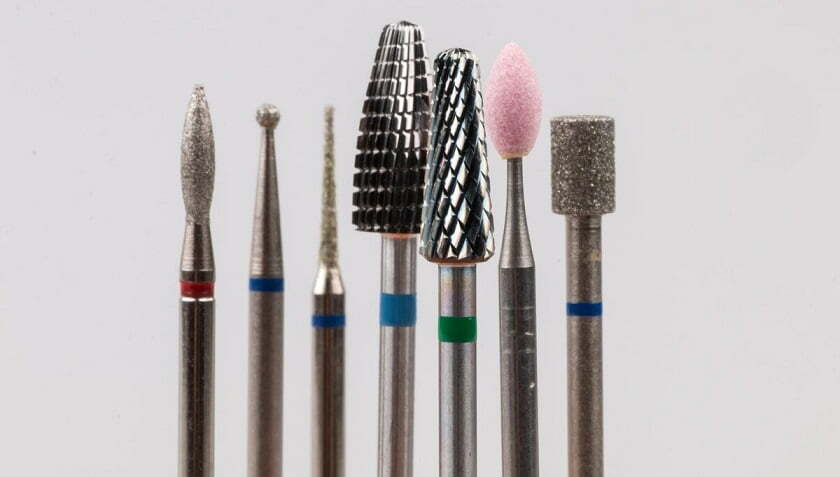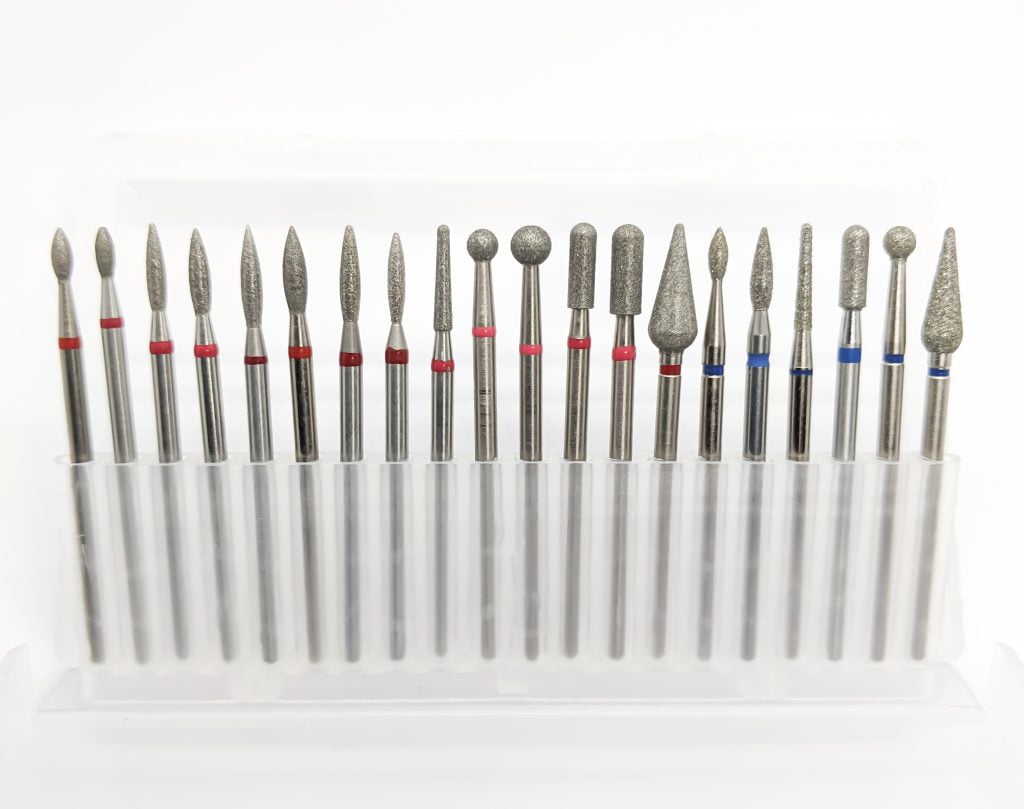Manicure is increasingly replacing the usual edged manicure. This is not surprising:
- It is more gentle and safe.
- Its effect lasts longer.
- Painful sensations are almost absent.
All you need to get started is to buy a manicure machine and choose suitable attachments for it: burs, grinders, polishers, and so on. This article will talk about e file bits – which ones exist, how to choose, and how to care for them properly.
Types of e file bits
Nozzles for hardware manicure differ in the material of which they are made, shape, the diameter of the working part and the degree of abrasiveness.
By material, cutters are divided into:
● Ceramic – soft and highly safe tips. Their main advantage is that they heat up weakly at high speeds, do not collect dust and do not rust; the disadvantage is rapid wear. Typically, these cutters are used with a new device to get used to it quickly. Abrasiveness can be from 100 to 400 microns. Fine-grained ceramic e file bits are used for polishing the nail plate and final work with the skin, medium-grained – for processing the cuticle, coarse-grained – for high-quality removal of keratinized skin.
● Diamond – are more rigid, and therefore more functional. They are mainly used for polishing nails, modelling their free edges, processing lateral ridges and cuticles, calluses and interdigital space. They are made both from natural diamonds (more expensive) and from diamond chips.
● Carbide – used at the beginning of the procedure to remove acrylic, keratinized skin, work with an ingrown nail, drill out hard calluses or work in hard-to-reach places. Ideal for working with extended nails.
● Steel – made of high-quality alloys and used to remove the weakened layer of the nail, work on keratinized skin and the nail plate—ideal for correcting extended nails and removing calluses.
● Corundum – made of synthetic ceramic chips similar to acrylic. The structure of their particles is not rigid, and the cutters themselves do not have sharp edges or corners. Therefore, they can remove delicate skin without leaving scratches gently and are especially recommended for treating the lateral areas around the nails.
By shape, cutters are divided into dozens of varieties. Most Popular:
● olive (oval, kidney) – for cuticle removal, minor adjustments, processing of lateral ridges;
● straight cylinder – for cutting off the modelling layer (gel, acrylic, tips);
● pointed cylinder – for opening the sinuses and processing the rollers;
● needle – for removing gel polish, correcting gel nails, working with detachments near the cuticle, and removing artificial material.
● ball – to remove small build-ups and cracks;
● rounded cylinder – for polishing nails, removing calluses;
● flame – for processing side bolsters, removing artificial material, drilling out a place for rhinestones or piercings;
● cone and truncated cone – for grinding and polishing;
● reverse taper – for processing the plate before the French manicure. The nozzle helps process the tip as smoothly as possible while eliminating height differences.
Subtleties of the choice of e file bits
First of all, the choice depends on the capabilities of your device. The larger the cutter, the lower the RPM you are working at.
When buying, be sure to pay attention to the warranty period. If it is minimal (1 year), then, most likely, the cutter is unlikely to last longer. The advantage of such products is their low cost. The letter “T” in front of the part number indicates that the bit is coated with titanium nitride, which means that its cutting ability is higher than that of conventional ones.
A coloured stripe on the cutter shaft (yellow, red, blue, green, black) will indicate the type of cut. Yellow is the softest; black is the roughest.
Before you go for e file bits, be sure to familiarize yourself with the ISO international standard bit marking system. The marking includes:
- 15 symbols that carry information about such indicators as the type of material.
- The total length of the cutter.
- The diameter and shape of the working part.
- The class of abrasiveness.
- The type of teeth cutting.
- The kind of connection between the tip and the shank.
How do you take care of the e file bits?
The e file bits are disinfected separately from other instruments, in a particular container with a sieve insert and only with the help of professional solutions. Please note that not all cutters can be sterilized at home – for example, silicone and ceramic nozzles, in principle, cannot be reused.
It is necessary to store e file bits in a UV sterilizer equipped with germicidal lamps.

